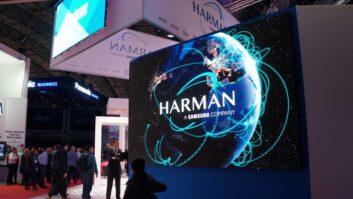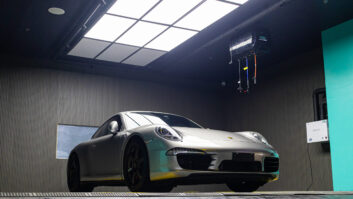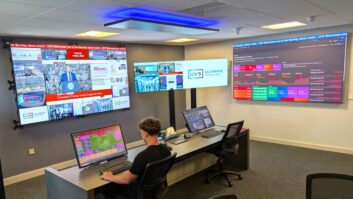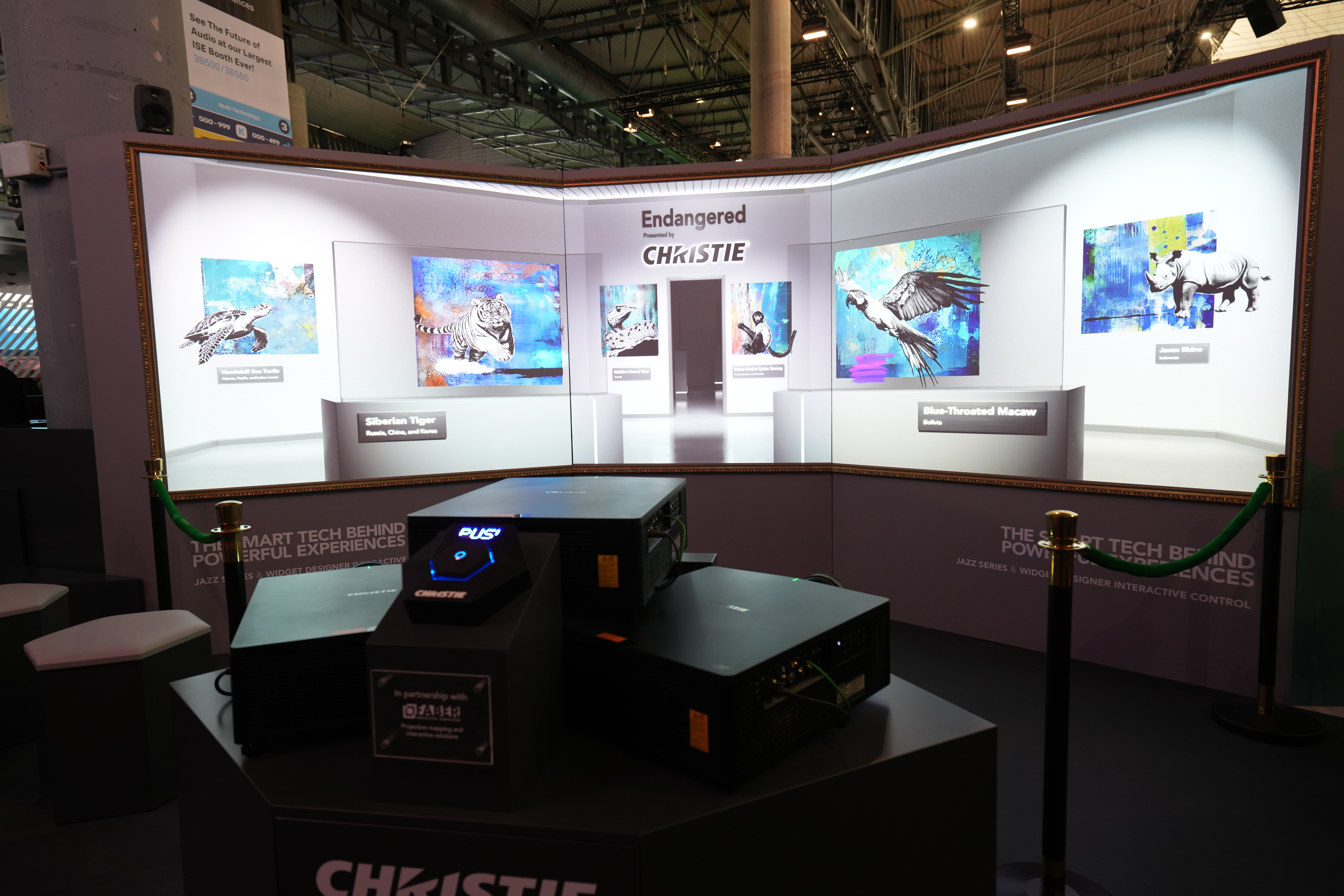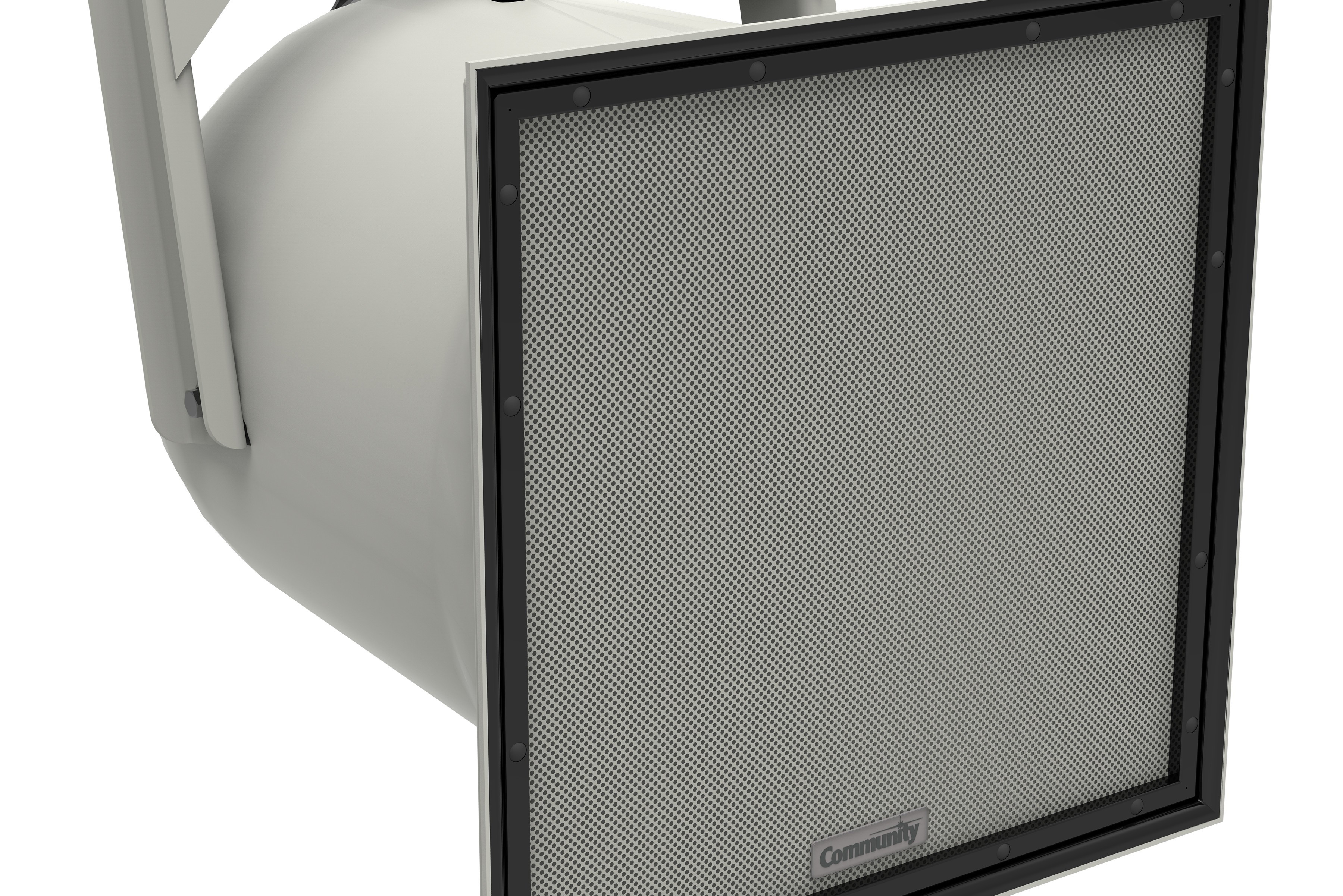
Covering every inch of a venue to ensure a loudspeaker system performs optimally is essential to any install. James McGrath looks at seven different speaker models currently available on the market.
Community Pro’s R2
The R-series from Community Professional is an all-weather range of high-performance loudspeakers comprising eight models.
Representing the core of the range is the R2, which can typically be deployed in outdoor as well as indoor environments thanks to its all-weather qualities. The outer enclosure forms part of a double wall construction, with the internal bass horn acting as the second layer, providing a completely weather-sealed chamber for the LF drivers.
The R2 is available in three symmetrical and two asymmetrical coverage patterns with 400W continuous power handling and 130-133dB maximum output. The array of coverage patterns means the range is suitable for installation in numerous locations. The system is suitable for both music and speech with high intelligibility over long distances through high power and efficiency and what the company says is extremely low distortion.
Recent EN54-24 certification enables audio consultants and installers to deliver a single system for information, entertainment and fire alarm systems.
V-Series from d&b audiotechnik
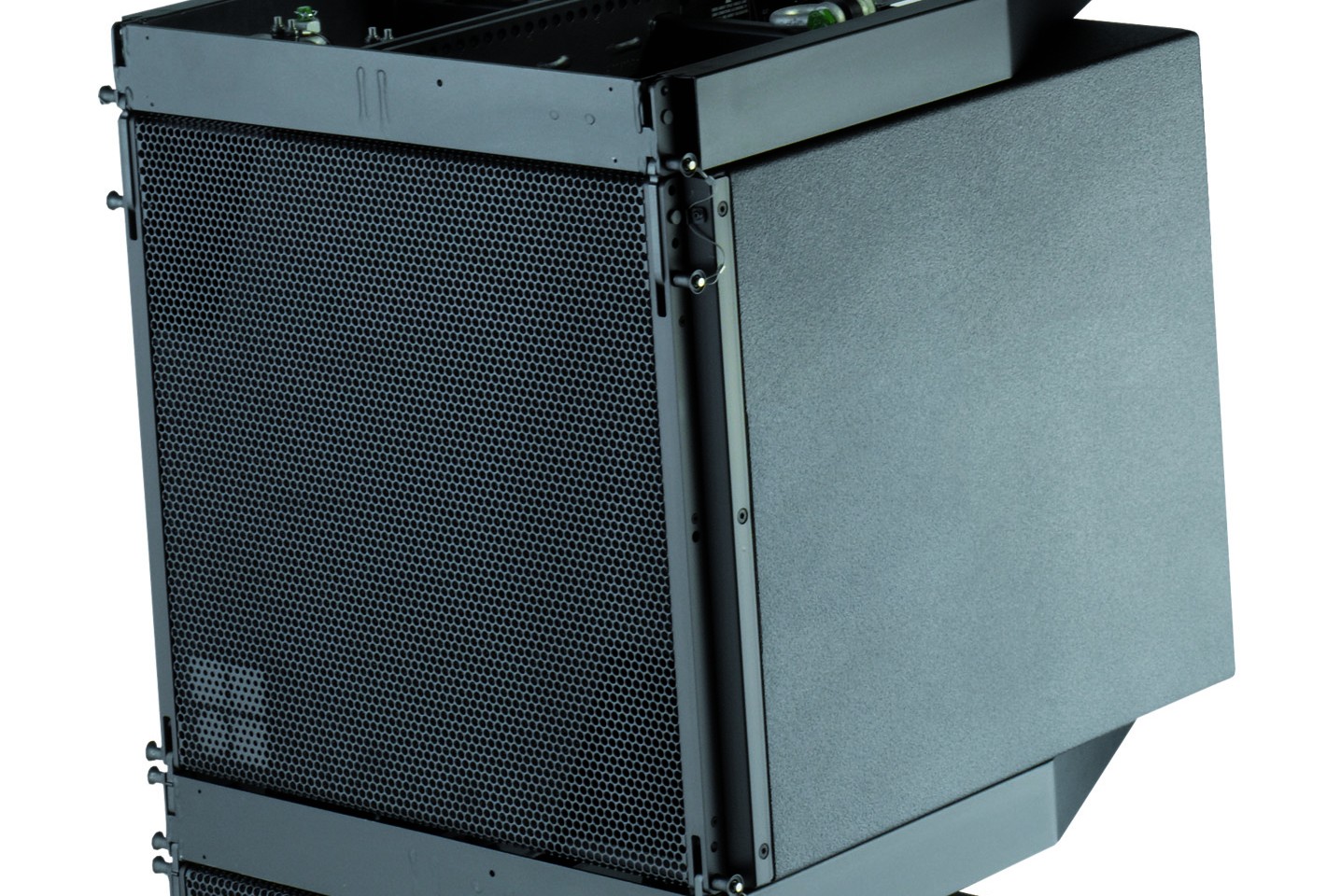
The d&b audiotechnik passive V-Series has been created to meet the demands of a wide range of application requirements. The Vi8, Vi12 and Vi-SUB, which differ only in mounting hardware from their live counterparts, are designed for permanent installations.
With weather resistance and colour options these line array loudspeakers can be made to blend with their surroundings, while d&b technical features ensure impressive results. The cardioid subwoofer suppresses energy towards the rear, while the two horizontal dispersion options of 80° and 120° for the three-way passive Vi8 and Vi12 respectively are controlled down to 250Hz.
Constant directivity and ease of use are particular concerns at d&b; the operation of the Vi loudspeakers is simplified by a workflow comprising d&b ArrayCalc simulation software, R1 Remote control software and amplifiers.
ArrayCalc predicts the electroacoustic performance of a system in a given venue, even with curved walls, before the export function generates an R1 Remote control file. This software offers all features and functions available on the front of a d&b amplifier, and these can be remotely controlled and monitored from anywhere in the network. All settings are saved, meaning the user knows that on start-up all functions will be recalled and the system will perform consistently.
Funktion-One’s MST1040
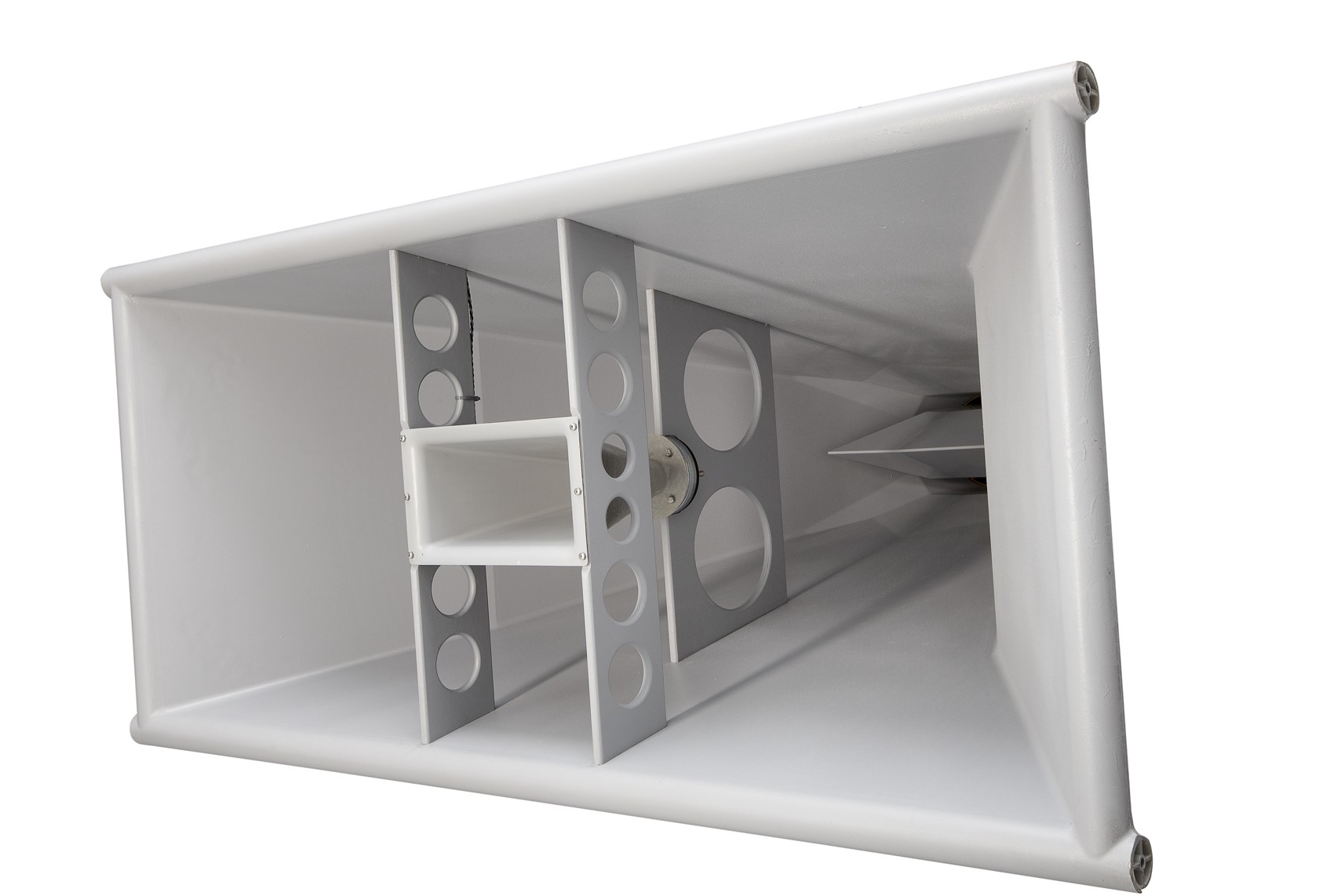
Following the launch of the MST1040 in early 2013, British loudspeaker manufacturer Funktion-One recently extended the MST (Modular Stadium Technology) Horn range with the addition of a wider dispersion option. It means the large-format loudspeaker range boasts the MST1040 (20º vertical, 60º horizontal) and the MST160 (20º vertical, 60º horizontal).
The MST Horns have been designed for expansive environments, such as arenas and stadiums, where audio performance is integral to the audience’s enjoyment and its safety.
Both models are said to deliver excellent low-frequency dispersion control without recourse to impact-compromising delay techniques. By using MST Horns in acoustically challenging environments, sound can be focused where it’s needed, without exciting the reverberation space. The company says such levels of control, combined with ultra-low distortion and exceptional pattern control, result in clear message transmission and intimate, intelligible and involving sound.
Large waveguides that completely control all the relevant frequencies – including low-mid – enable audio to be directed solely at audience areas.
L-Acoustics ARCS series
The Arcs Wide and Arcs Focus systems from L-Acoustics have designs based on two constant curvature enclosures, which ensure distant directivity pattern and SPL capabilities.
The systems are primarily made for medium-throw application in fixed installations but are versatile in that they can also be deployed in rental applications. The line sources deliver the necessary performance for applications including FOH L/R systems, central clusters, side-fill monitors, distributed systems and complementary fills.
Both line sources provide high SPL with a high standard of acoustic coupling. Coverage angle of the Arcs Wide line source is proportional to the number of enclosures in the array: N x 30º.
By contrast, the Arcs Focus line sources focus the same acoustic energy within half of the coverage angle: Nx15º. The Arcs Focus is therefore suited to achieve a narrower coverage, offering higher SPL with a more extended throw than its sibling.
Another benefit of the systems is that they can also be combined in hybrid arrays for complex audience geometries. The dual directivity pattern and the various possible speaker configurations allow a high level of creative freedom, according to L-Acoustics. Before installation, these configurations can be acoustically and mechanically modelled with the company’s Soundvision 3D simulation software.
The company’s LA4X and LA8 amplified controllers sit at the heart of the system and can be monitored and controlled in real time using the LA-Network manager software.
VUE Audiotechnik al-8 line array
VUE Audiotechnik’s flagship al-8 line array offers versatility and sound quality in mainstream line array applications. It features state-of-the-art transducers – including VUE’s unique beryllium compression drivers – as well as intelligent system electronics, on-board SystemVUE networking and full compatibility with VUEPoint beam steering technology.
al-8 is an adaptable array system that is suitable for numerous applications. The company’s rackmounted V6 System Engine acts as the system’s optimised DSP/amplifier. VUE believes its DSP technology improves out-of-the-box performance while streamlining set-up. Installers assemble the array and then select the appropriate configuration from the SystemVUE software. The result is that minimal EQ or tweaking is required, so the operator is free to concentrate on creating the mix.
Meyer Sound’s LYON
The self-powered LYON linear sound reinforcement system is the newest addition to the Meyer Sound LEO family of linear loudspeakers. The company believes that by incorporating the technology of the LEO family in a lighter and more compact package, LYON extends the advantages of highly linear self-powered systems to a broader range of venues and applications.
To make a solution possible for numerous types of installation – offering maximum flexible in system design – LYON is available in two versions. The LYON-M main loudspeaker serves as the anchor for installations in arenas and large auditoriums, as well as tours and festivals. LYON-W, meanwhile, provides wider horizontal coverage at the bottom of LYON arrays and can also be used for the top of an outfill array for upper side arena seating.
Both the loudspeakers can work with LEO-M systems, handling the wider coverage needs at the bottom of LEO-M arrays, and serving as outfill or delay arrays when needed.
The system features a high peak power output with exceptional linearity and precise transient reproduction at any operating level, and is self-powered for simplified set-up and increased reliability.
What’s more, LYON’s Compass RMS remote monitoring system reports loudspeaker performance statuses, assuring greater reliability. Self-powered technology eliminates power amplifier racks and attendant room cooling requirements.
Martin Audio MLA Compact
The MLA Compact from Martin Audio represents a new direction in the way loudspeaker arrays are configured and controlled. The company believes the device delivers much more consistent sound compared to conventional arrays.
Instead of the line array goal of producing coherent wavefronts as they exit the speaker grilles, MLA Compact focuses on what arrives at the audience. The users/engineer specifies the SPL and frequency response required at various points throughout the venue, and intelligent software controls each of up to 120 individual cells in the array to produce the desired result.
Every cell in the array is controlled by a central computer, meaning the MLA Compact is not constrained by the 3dB decrease in SPL with doubling of distance that is associated with conventional line arrays.
Instead, the frequency response and SPL at the farthest seats closely track those at the front rows. ‘Hard-avoid’ areas such as ceilings and rear walls can be programmed in and vertical coverage can be fine-tuned electronically. This is very significant, given the acoustic challenges that large-venue installations can present. This way of operating a line array also removes trial and error from the outcomes.
